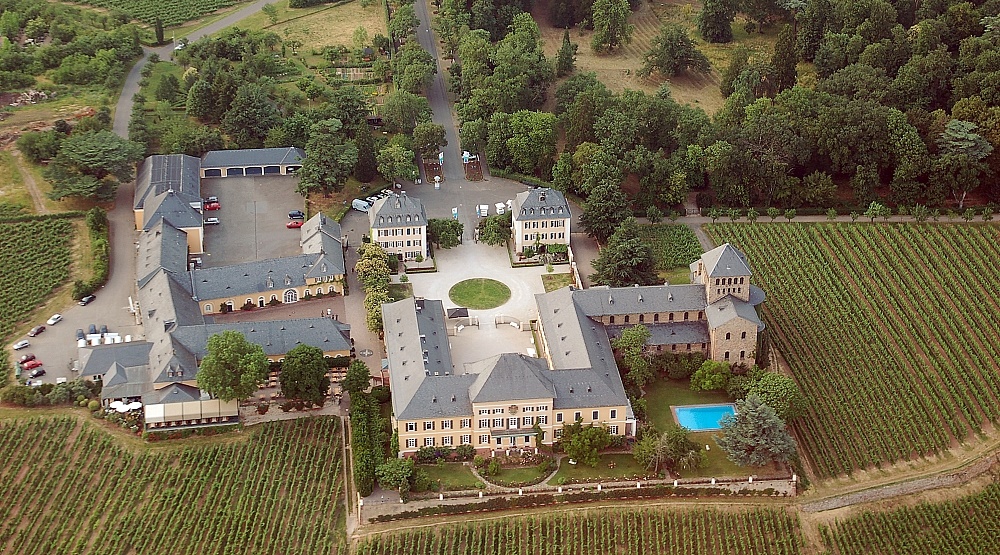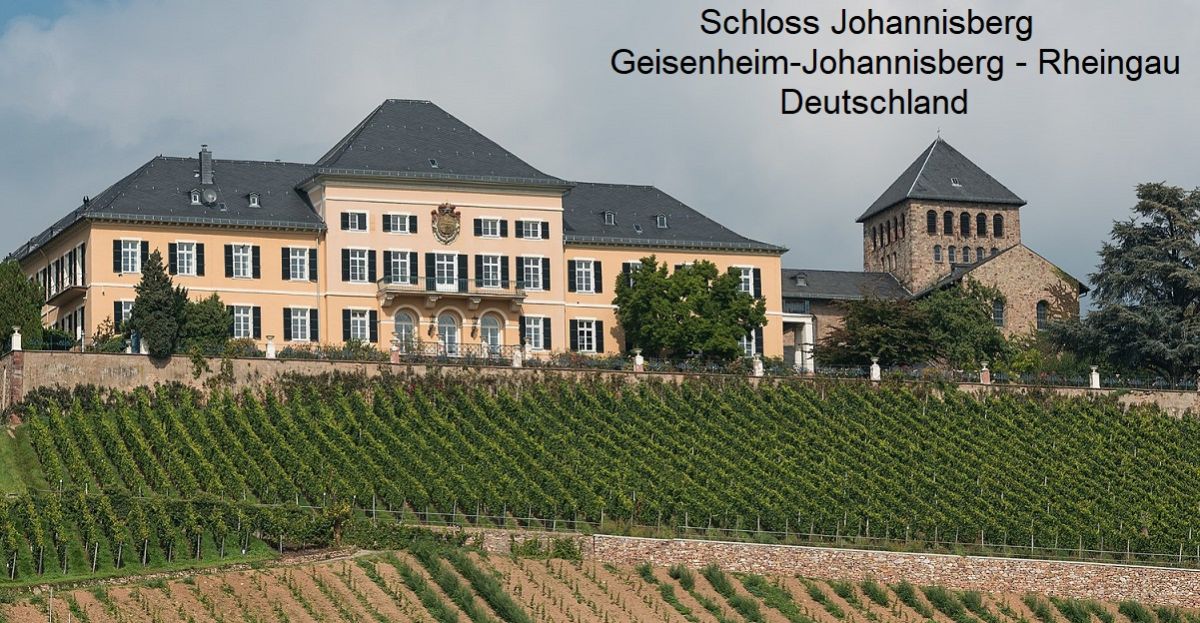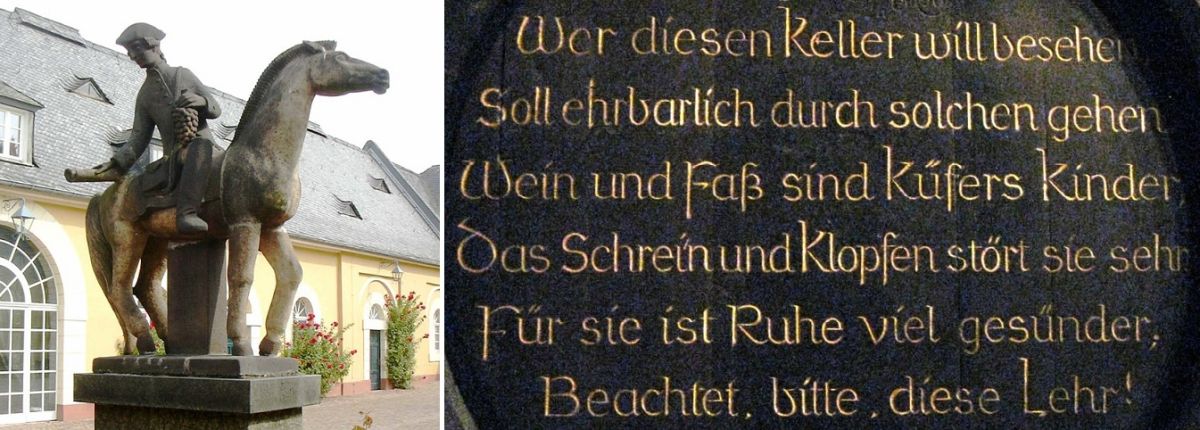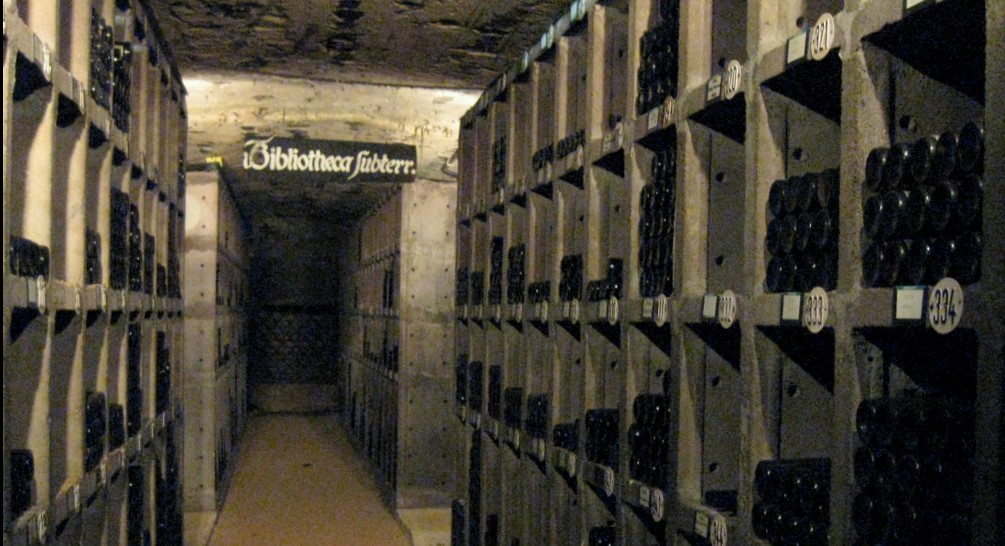currently 167,549 Wines and 25,100 Producers, including 3,302 classified producers.
 0.75 L
0.75 L
 0.75 L
0.75 L
 0.75 L
0.75 L
 0.75 L
0.75 L
 0.75 L
0.75 L
 0.75 L
0.75 L
World-famous winery with headquarters in the castle of the same name on the famous Johannisberg in the Rheingau. Charlemagne (742-814) is said to have had a vineyard planted on Johannisberg for the first time. Between 1096 and 1100, Benedictine monks from Mainz built a monastery on the Bischofsberg plateau above the village of Johannisberg and also cultivated vines. This makes the estate one of the oldest wineries in Germany. The "St John the Baptist" basilica was consecrated in 1130 and gave the monastery and the community its name.

In 1716, the Prince-Abbot of Fulda Konstantin von Buttlar (1679-1726) bought the remains from the Elector-Bishop of Mainz Lothar Franz von Schönborn (1655-1729) for 75,392 guilders (€ 1.85 million today), had the building demolished and had a three-winged, baroque palace building erected there as a summer residence. The symmetrical façade of the main building is characterised by clear lines and is dominated by the central clock tower. The castle is surrounded by gardens and vineyards. A huge, 250 metre long cellar was added to the old cellar in 1721.
At the time, the vineyards were usually planted with mixed vines, including the historic Elbling and Orléans varieties. In 1720, the prince abbot had the mixed vines on the southern slope facing the Rhine torn out and planted with Riesling. This contributed to the spread of the variety also known as "Johannisberg Riesling". Johannisberg cuttings were sought after on all continents, and many a vine in Australia, South Africa and the USA originated from here. During the Napoleonic Wars, the Rheingau was occupied by the French and the castle and vineyards were secularised in 1803. Emperor Napoleon (1769-1821) gave the estate to his marshal François-Étienne-Christophe Kellermann (1735-1820), the Duke of Valmy. The latter sold the entire harvest of the famous 1811 vintage to Gottlieb Mumm (1782-1852), thus founding today's G.H. von Mumm winery.

The poet Heinrich Heine (1797-1856) wrote enthusiastically about the Johannisberg: "Mon Dieu, if only I had so much faith in me that I could move mountains, the Johannisberg would be just the mountain that I would let follow me everywhere" . Other famous lovers of Johannisberg wine were Johann Wolfgang von Goethe (1749-1832), who was served a Riesling Johannisberg Cabinet vintage 1748 on his 66th birthday, the author of the novel "Leatherstocking" James Fenimore Cooper (1789-1851), the German Emperor Wilhelm II (1859-1941) and the composer Ludwig van Beethoven (1770-1827). Goethe visited Johannisberg Castle in 1814 and wrote: "Johannisberg towers above everything. The magnates have no quarrel among themselves. Hochheimers, Johannisbergers and Rüdesheimers recognise each other, only among the gods of lower rank is there jealousy and envy".
In a letter, Thomas Jefferson (1743-1826), the future US president and then US ambassador to France, wrote after travelling on the Rhine in 1788: "Stop your journey in Rüdesheim and at the Johannisberg monastery to examine the vineyards and wines there, the latter is the best produced on the Rhine, it is incomparable and costs about as much as the oldest Hochheimer. The 1775 vintage is the best". In the same year, the famous story of the late harvest rider with the "invention" of the Spätlese took place on the Johannisberg, as a sculpture in the castle courtyard testifies. From 1788, all vintages were bottled and precise bottling lists were drawn up with origin, bottle price and quantity. The monks began to be more selective and systematically produce Spätlese and Auslese wines. There is documentary evidence that one of the first ice wines was pressed here in 1858.

The picture on the left shows the famous Spätlesereiter. The picture on the right shows a barrel with an inscription in the historic Johannisberg wine cellar: " Whoever wants to see this cellar should go through it honourably. Wine and barrels are cooper's children, the shouting and knocking disturb them very much. Quiet is much healthier for them. Please heed this lesson!
After the Battle of Leipzig in 1813 and the defeat of Napoleon, the estate was under the joint administration of Austria, Prussia and Russia until 1815. During the negotiations at the Congress of Vienna (1814-1815), the estate came into the possession of the Austrian Emperor Franz I (1768-1835), who gave it to Prince Klemens Wenzel Lothar Count Metternich-Winneburg (1773-1859) for his services to European peace on the condition that the Habsburg family or their legal successors were to be paid an annual tithe from the yield. Legally, the beneficiary would still be the House of Habsburg today, but this is presumably not claimed by the descendants.
In 1942, the castle was bombed and almost completely destroyed. The great-grandson of Chancellor Paul Alfons Metternich restored it to its former splendour until 1965. The owner is the "Fürst von Metternich-Winneburg'sche Domäne Schloss Johannisberg GbR". The administrator is Christian Witte and the cellar master is Gerd Ritter (who are also responsible for the neighbouring G.H. von Mumm winery). At the end of 2001, the 900th anniversary of the winery was celebrated at Schloss Johannisberg with numerous celebrities.
The vineyards cover 35 hectares of vines in the winery's monopoly single vineyard Schloss Johannisberg, which extends below the castle at an altitude of 114 to 182 metres above sea level with a slope of 10 to 45%. Administratively, Schloss Johannisberg is a separate district of the municipality of Geisenheim, which, under the 1971 wine law, gives the right to use the vineyard name on the bottle label without a place name. The soils consist of stony loess and loam with Taunus quartz in the subsoil. The 50th parallel, which is generally regarded as the northern limit for commercial viticulture, runs right through this vineyard. However, the excellent microclimate also allows figs, almonds and lemons to ripen here.

The Schloss Johannisberg harvest has been fully documented since 1700. The collection in the wine treasury known as the "Bibliotheca subterranea" dates back to the 19th century, with the oldest bottle dating back to 1748.
After whole-cluster pressing, the wines are fermented slowly and cool. The quality levels are identified by colour. These are yellow for quality wines, red for Kabinett, green for Spätlese, pink for Auslese, pink-gold for Beerenauslese, gold for Trockenbeerenauslese and blue for Eiswein. The 1996 ice wine, which was harvested early in the morning on 26 December in the freezing cold and had a must weight of 180 °Oechsle and an acidity of 18.9 per mille, is known as the wine of the century. A Trockenbeerensauslese from the 2020 vintage was sold for € 18,000 at a VDP auction. Around 260,000 bottles of wine are produced every year. Schloss Johannisberg is the origin of the sparkling wine brand "Fürst von Metternich", see the history under the keyword Söhnlein.
Aerial view: by Fritz Geller-Grimm - Own work, CC BY-SA 2.5, Link
Johannisberg Castle - by DXR - Own work, CC BY-SA 3.0 de, Link
Late reader rider: by Gabriele Delhey - adapted from Image:Spätlesekurier.JPG, CC BY-SA 3.0, Link
Barrel inscription: by Renate007 - Own work, CC BY-SA 4.0, Link
Wine library: by Renate007 - Own work, CC BY-SA 4.0, Link